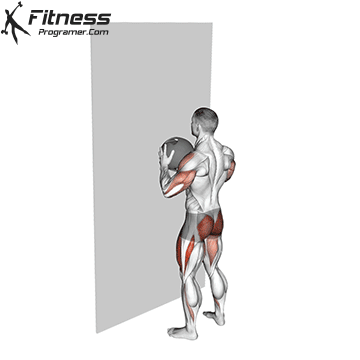How to: Single Leg Box Jump
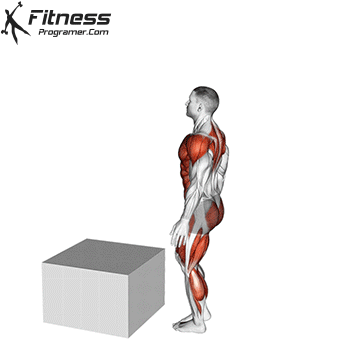
How to do Barbell Jump Squat
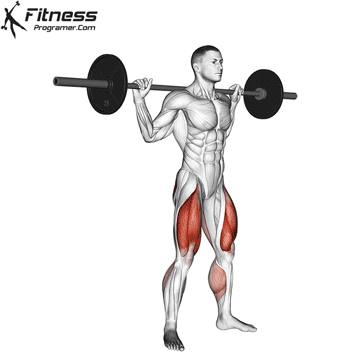
Reaction Ball Throw / Agility Ball
The Reaction Ball Throw is a training exercise that focuses on improving your reaction time, hand-eye coordination, and agility. This exercise involves throwing a reaction ball against a wall and reacting quickly to its unpredictable bounces. The goal is to react quickly to the ball’s movements and catch or control it. It’s often used in basketball training, fitness routines, and agility-focused workouts.
How to do:
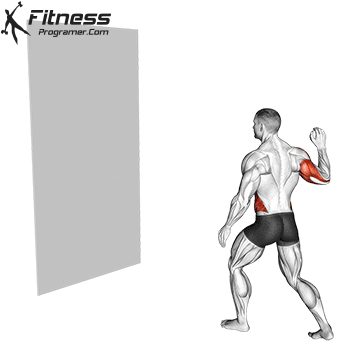
Here’s how you can perform a Reaction Ball Drill:
- Stand facing the wall or chosen surface with the reaction ball in one hand (e.g., your right hand if you’re starting with your dominant hand).
- Assume a comfortable athletic stance with your feet shoulder-width apart.
- Hold the reaction ball at chest level with your arm slightly bent.
- Use your wrist, arm, and core muscles to throw the reaction ball against the wall. The goal is to create an unpredictable bounce.
- As the ball bounces back, quickly react to its movement with the same hand and attempt to catch it.
- Focus on tracking the ball’s trajectory and adjusting your hand positioning to catch it accurately.
- Repeat the throws and catches for a set number of repetitions or a specified time period.
Hand Switch:
- After completing the desired number of throws with one hand, switch to the other hand (e.g., your left hand if you started with your right).
- Perform the same single-handed throws and catches with the opposite hand.
- This variation challenges your coordination and reaction time with your non-dominant hand.
What is Reaction Ball Training?
At its core, reaction ball training involves using a specialized ball with uneven surfaces that cause unpredictable bounces when thrown against a solid surface. The irregular rebound of the ball challenges your ability to anticipate its trajectory, requiring quick reflexes and precise hand-eye coordination to catch or control it. Reaction ball training is not only physically demanding but also mentally stimulating, as it sharpens your cognitive skills by forcing you to process information rapidly and make split-second decisions.
Benefits of Reaction Ball Training
Enhanced Reflexes: Reaction ball training conditions your body to respond swiftly to unexpected movements. The rapid adjustments needed to catch or control the ball fine-tune your motor skills. This translates to improved reaction times in various situations, both in sports and daily life.
Agility: Agility is the ability to change direction quickly and gracefully. The rapid movements demanded by reaction ball training bolster your agility by teaching your body to adapt swiftly to changing conditions.
Hand-Eye Coordination: The erratic bounces of the reaction ball require your eyes and hands to work together harmoniously. Regular practice refines your hand-eye coordination, enabling you to react accurately and effectively.
Attention Control and Visual Processing: The unpredictability of the ball’s movement requires intense focus and attention. Tracking the movement of the reaction ball challenges your visual processing abilities. Your brain rapidly processes visual cues, calculates trajectory angles, and predicts where the ball will bounce next.
Muscle Coordination: Your muscles must work together harmoniously to catch the ball. This coordinated effort between different muscle groups improves overall muscle coordination.
Incorporating reaction ball training into your routine not only makes your workouts more dynamic but also stimulates your brain, leading to improved cognitive function in parallel with enhanced physical prowess.
Reaction Ball Throw: Muscle activation
The Reaction Ball Throw works various muscle groups in your upper body, lower body, and core while performing the throwing and catching movements of the ball. Here’s a breakdown of the main muscles worked during the Reaction Ball Throw:
1. Upper Body Muscles:
- Deltoids (Shoulders): The deltoid muscles are actively engaged during the throwing motion as you generate power to propel the reaction ball forward.
- Biceps and Triceps: Both the biceps (front of the upper arm) and triceps (back of the upper arm) are used to control and stabilize your arm during the throw and catch.
2. Core Muscles:
- Rectus Abdominis (Abs): Your core muscles are engaged to stabilize your trunk during the throwing and catching actions, helping maintain your posture and control the movement.
- Obliques: These muscles on the sides of your abdomen also contribute to core stability during the rapid movements.
3. Back Muscles:
- Latissimus Dorsi (Lats): These muscles in your back are involved in the pulling motion during the throw and catching phases.
- Erector Spinae: These muscles run along your spine and help maintain an upright posture during the exercise.
4. Arm and Hand Muscles:
- Forearm Muscles: The muscles of the forearm are engaged in gripping and controlling the reaction ball, especially during catching.
- Wrist Muscles: The muscles of the wrist play a role in controlling the ball’s bounce and your hand’s movement.
5. Lower Body Muscles:
- Quadriceps and Hamstrings: These muscles in the front and back of your thighs, respectively, are involved in stabilizing your lower body and assisting with the throwing and catching movements.
- Calves: Your calf muscles help provide stability and balance during the exercise.
6. Hip Muscles:
- Hip Flexors and Extensors: The hip flexors and extensors play a role in generating power during the throwing motion and maintaining balance.
Overall, the Reaction Ball Throw exercise provides a comprehensive workout for multiple muscle groups in your upper body, core, lower body, and even your hands. Its dynamic nature engages these muscles in various ways, improving not only strength but also coordination, agility, and balance.
References:
Squat Tuck Jump
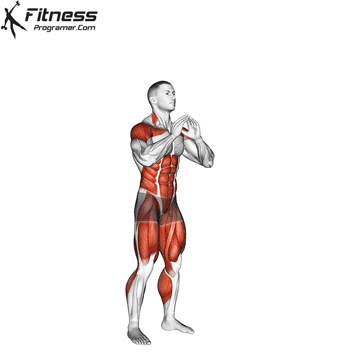
1-2 Stick Drill
The 1-2 Stick Drill is a popular agility and plyometric exercise used by athletes in various sports, including football and basketball. It involves jumping and shifting the feet quickly and efficiently, requiring a combination of agility, coordination, and power.
How to do:
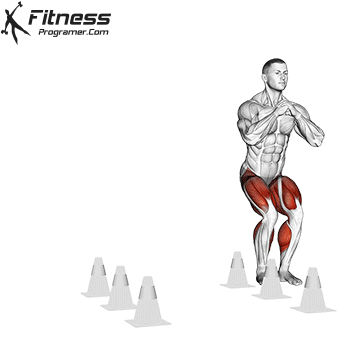
Here is a breakdown of how to perform the 1-2 Stick Drill and the benefits it offers:
- Set Up: Start by standing with your feet shoulder-width apart, knees slightly bent, and arms at your front. Place two markers on the ground, about one to two feet apart.
- Jump: Jump laterally to one side, landing on the ball of your foot with your knee slightly bent. Your opposite foot should be lifted slightly off the ground.
- Stick: Quickly push off the ground with the foot that just landed and jump laterally to the other side, landing on the ball of your foot again. As you land, make sure to stick the landing and hold it for a second before jumping to the other side.
- Repeat: Continue jumping from side to side, sticking each landing for a second before jumping to the other side. Perform for several repetitions or a set time.
Benefits of the 1-2 Stick Drill:
Why the 1-2 Stick Drill is a Must-Have for Any Athlete
This drill is widely used in a variety of sports, including football, basketball, and soccer, to help athletes develop the necessary skills to stop, change direction, and accelerate quickly.
The 1-2 Stick Drill is a plyometric exercise that requires athletes to perform a series of lateral movements while maintaining balance on a single leg. By incorporating this drill into your training regimen, you can develop your lower body strength, improve your balance and coordination, and reduce your risk of injury.
Here are some of the top reasons why the 1-2 Stick Drill is a must-have for any athlete:
1- Develops Lateral Movement
Lateral movement is an essential skill for any athlete, as it allows you to quickly change direction and make plays on the field or court. The 1-2 Stick Drill is designed to challenge lateral movement by demanding proper bending of the ankle, knee, and hip to control eccentric loads and absorb shock.
2- Improves Single Leg Stability
Maintaining balance on a single leg is a crucial component of many athletic movements, including jumping, cutting, and pivoting. The 1-2 Stick Drill requires athletes to maintain balance on a single leg while performing lateral movements, which can help to improve single leg stability.
3- Builds Eccentric Strength
Eccentric strength, which is the ability to absorb shock and decelerate quickly, is essential for preventing injury and improving athletic performance. The 1-2 Stick Drill places a high demand on eccentric strength, particularly during the stopping phase, which can help to develop this crucial skill.
4- Enhances Reactive Strength
Reactive strength is the ability to quickly absorb an eccentric load and change direction to accelerate. The 1-2 Stick Drill requires athletes to perform this type of movement, making it an effective way to develop reactive strength.
5- Increases Lower Body Strength
The 1-2 Stick Drill requires athletes to generate force through the lower body to stop and accelerate, making it an effective way to build lower body strength. This strength can translate into improved athletic performance in a variety of sports.
6- Improves Balance and Coordination
Maintaining balance and coordination during athletic movements is essential for performing at a high level and avoiding injury. The 1-2 Stick Drill challenges these skills by requiring athletes to maintain balance on a single leg while performing lateral movements.
7- Provides Variety in Training
Adding variety to your training regimen can help to keep things interesting and prevent boredom. The 1-2 Stick Drill is an excellent way to mix up your training routine while still targeting important athletic skills.
8- Can Be Adapted to Different Sports
The 1-2 Stick Drill is widely used in a variety of sports, including football, basketball, soccer, and more. It can be adapted to different sports by varying the distance between the sticks or adding in additional movements.
9- Enhances Mental Toughness
The 1-2 Stick Drill can be challenging, requiring athletes to push themselves to maintain balance and perform movements correctly. By pushing through the challenge, athletes can develop mental toughness and improve their ability to perform under pressure.
10- Easy to Incorporate into Training
The 1-2 Stick Drill is easy to incorporate into your training routine, as it requires minimal equipment and can be performed anywhere. It’s a versatile drill that can be done as part of a warm-up or incorporated into a larger workout.
Overall, the 1-2 Stick Drill is a versatile and effective drill that can benefit athletes in numerous ways. By improving lateral movement, single-leg stability, eccentric and reactive strength, and injury prevention, athletes can become better equipped to perform at a high level in their respective sports. By incorporating it into your training routine, you can improve your agility, coordination, power, and conditioning, ultimately helping you perform better on the court or field.
How To High Knee Run
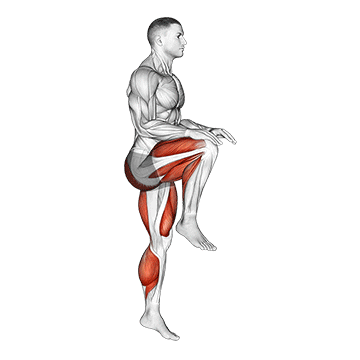
High Knee Run Benefits
- You can use this exercise both as a dynamic warm-up before training and add it to your cardio training routine to burn fat.
- High knee run are a plyometric exercise. Plyometrics are explosive aerobic moves that increase speed, quickness, and power and they work your whole body.
- High knee run target the oblique, leg muscles, hip muscles and hip flexors and also work on the thighs, knee tendons, quadriceps and shoulders.
- Jumps are beneficial to your health because they combine cardiovascular conditioning with strength work. Since jumps elevate your heart rate, they can also improve your cardiovascular fitness.
Muscles Worked in the High Knee Run
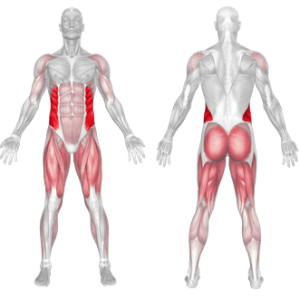
High Knee Skips
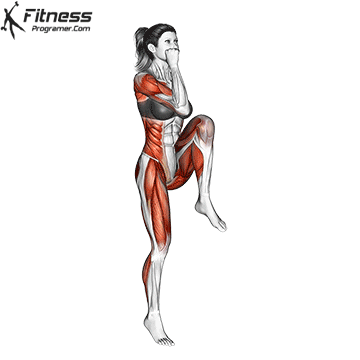
High Knee Skips Benefits
- You can use this exercise both as a dynamic warm-up before training and add it to your cardio training routine to burn fat.
- High knee skips are a plyometric exercise. Plyometrics are explosive aerobic moves that increase speed, quickness, and power and they work your whole body.
- High knee skips target the oblique, leg muscles, hip muscles and hip flexors and also work on the thighs, knee tendons, quadriceps and shoulders.
- Jumps are beneficial to your health because they combine cardiovascular conditioning with strength work. Since jumps elevate your heart rate, they can also improve your cardiovascular fitness.
Muscles Worked in the High Knee Skips

How To Do Skater Exercise
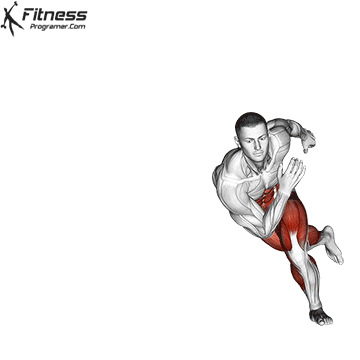
Skater Benefits
- Skater exercise are a plyometric cardio exercise involving jumping in a pattern that shifts your body weight from side to side to create a skating stride. While it mainly increases leg power, it’s considered a full-body, dynamic workout as it also targets your core, gluteus medius and adductors of the hip joints.
- Skater is a suitable exercise for beginners. It can help strengthen leg muscles, tighten hip muscles and burn calories to lose weight.
- Skater exercise is classified as an effective aerobic exercise that helps strengthen the heart and increase muscle strength and endurance. It also helps you improve your overall fitness performance, including strength, speed, fitness and flexibility.
Muscles Worked in the Skater
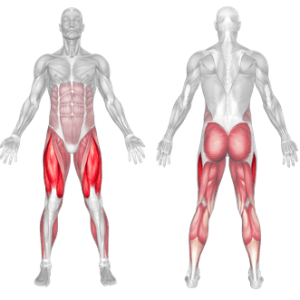
Supine Medicine Ball Chest Throw
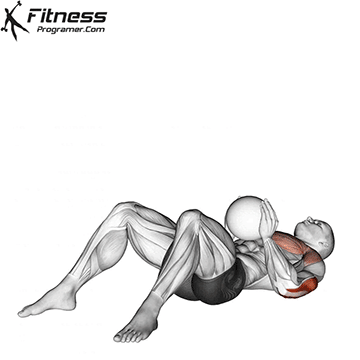
How to do Wall Ball
